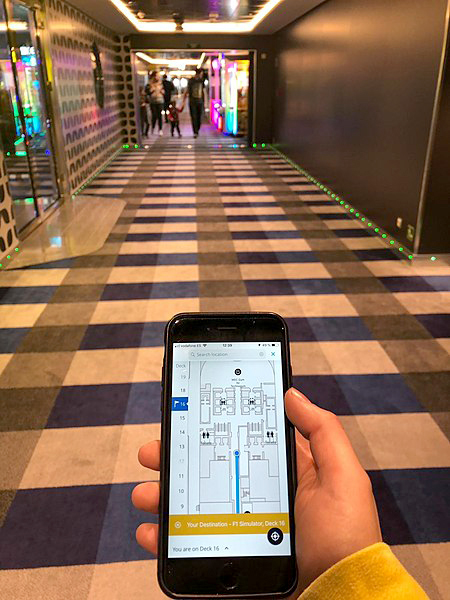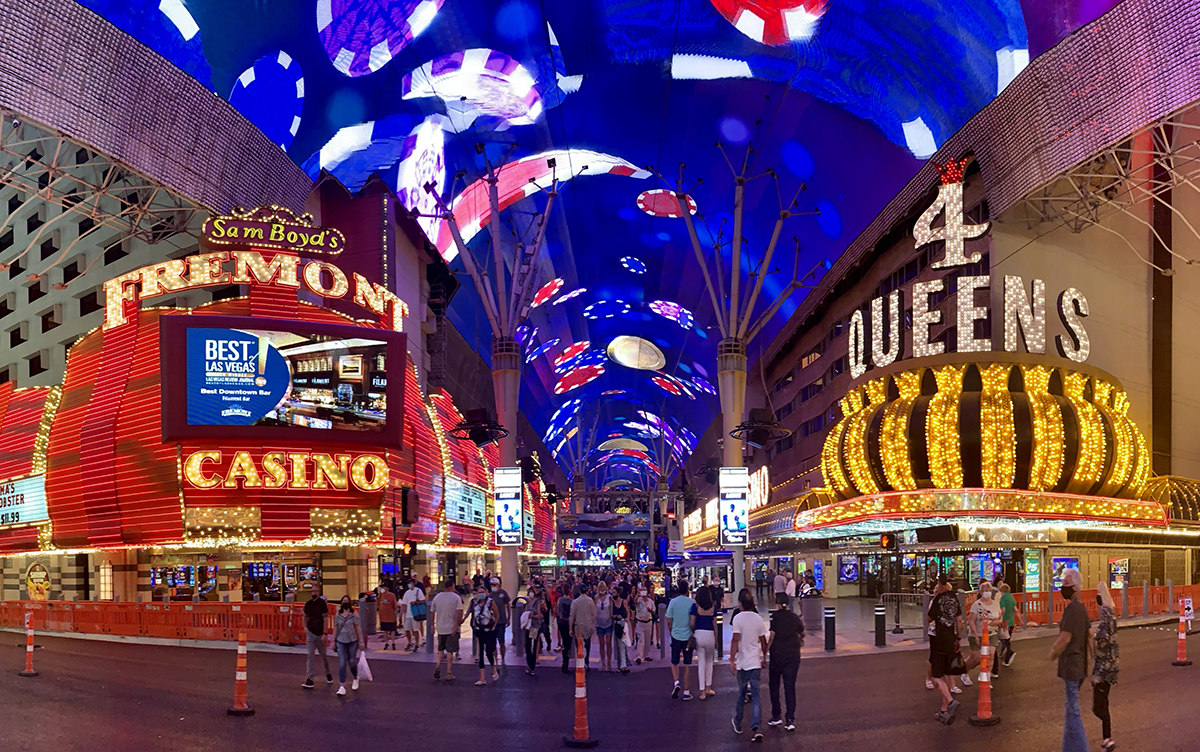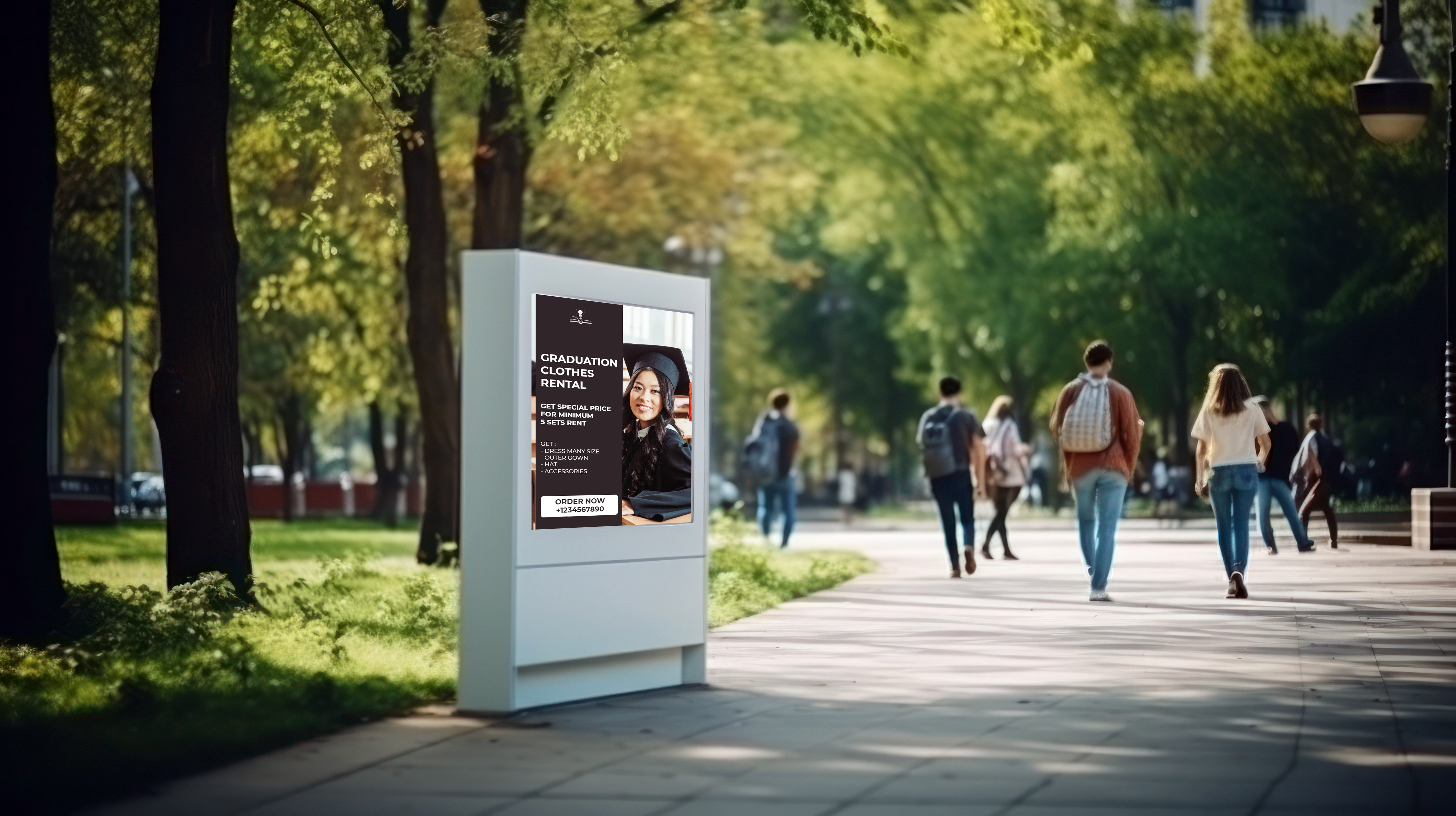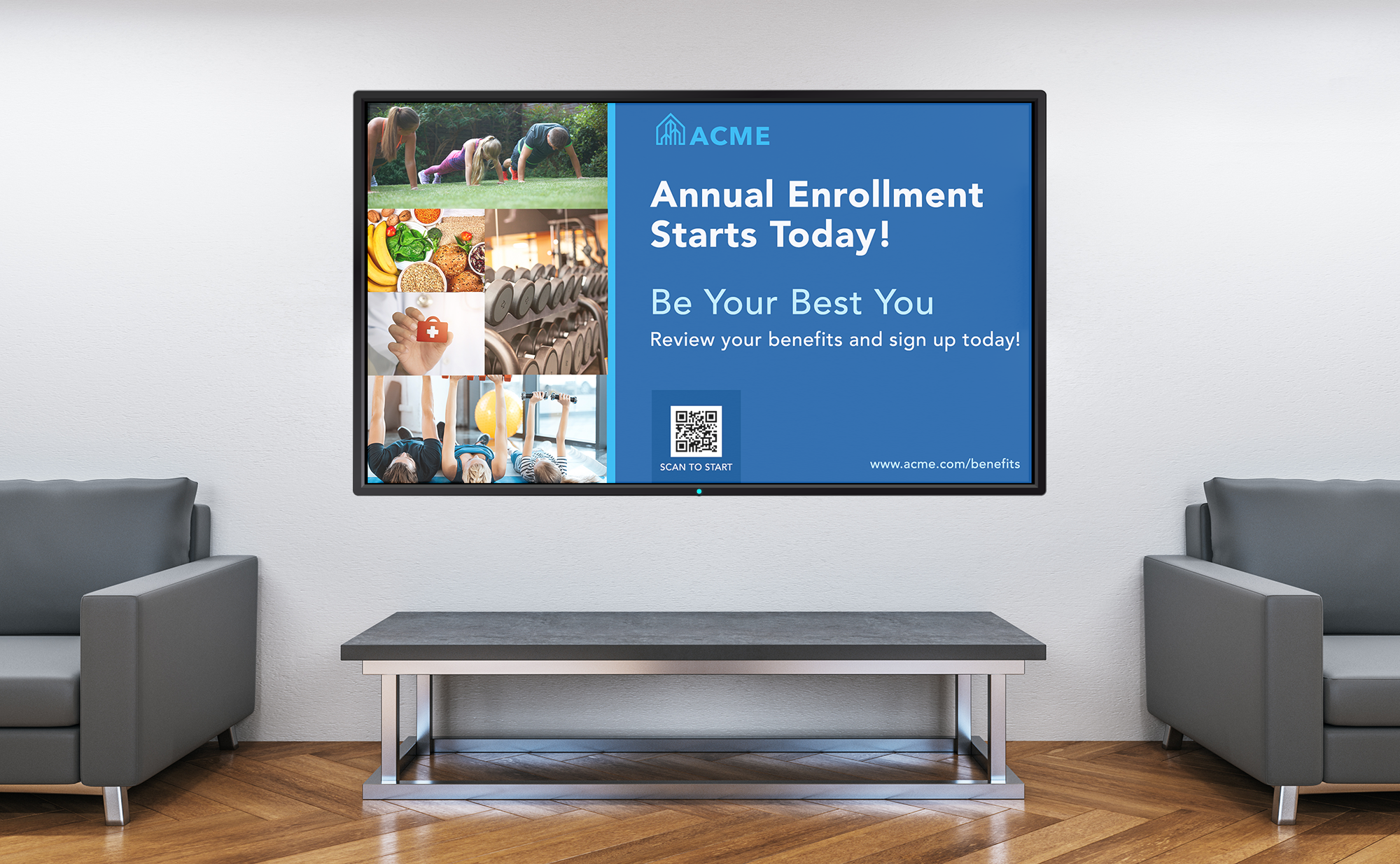By Guy Serwin
Are you tired of constantly seeing ads and receiving messages from companies? So is your audience. This is why it’s important to create unique and memorable experiences that stand out from the crowd.
Experiential signage is a powerful tool that can help you do just that. In this article, we’ll explore what experiential signage is, why it’s important, and how you can create your own engaging and captivating digital signage to connect with your audience.
What Is Experiential Signage?

Experiential signage aims to captivate the viewer with interactive elements, motion graphics, augmented or virtual reality, or even holographic images. Since you can connect with your audience and differentiate yourself from your competition, you are able to create an engaging and memorable experience.
As a result, you witness increased brand awareness and more sales.
How Experiential Signage Can Transform Your Meeting Rooms

The needs of corporate teams have evolved, and digital signage has met these challenges to deliver an experience that you can share on and off-site. Sensors and Bluetooth beacons are quite effective in delivering experiential signage through personalized and contextual interactions between people and their environment.
Several solutions use sensors and Bluetooth beacons to enhance meeting room and office signage possibilities. Consider these examples:
Occupancy Sensors: You can install sensors in meeting rooms to detect whether the room is occupied or not. Thus, communicate this information to a central system and update digital signage displays outside the room to indicate whether the room is available or in use.
Bluetooth Beacons: Place Beacons outside meeting rooms to detect the presence of nearby mobile devices. Use this information to trigger personalized content on digital signage displays, such as displaying the name of the meeting organizer or the meeting topic.
Temperature and Humidity Sensors: Install sensors throughout your office space to monitor temperature and humidity levels. Thus, trigger alerts or updates on digital signage displays. For example, notify your employees of a change in temperature or humidity that may affect their comfort or productivity.
Together, sensors and Bluetooth beacons can create a more immersive and engaging experiential signage experience. Since they provide real-time information and personalized messages to people as they move through physical spaces.
How Experiential Signage Is Leading the Way in Modern Wayfinding
Help your team, clients, and guests navigate through physical spaces in the new office. During any emergency, provide clear and concise directions to help people exit the premises.
Sensors and Bluetooth beacons can enhance wayfinding signage by providing real-time updates and directions to people as they move from place to

place. Create a more immersive and engaging wayfinding experience and helping people feel more connected to their environment, and reducing the likelihood of confusion or frustration.
Also, you can leverage wayfinding signage to reflect the brand or personality of your space, incorporating unique designs or elements that make the experience more memorable and enjoyable. It’s a successful way to create a positive impression of the space and increase engagement with your visitors or customers.
How Signage Is Taking Interactive Kiosks to the Next Level
Strategically place interactive kiosk displays in common areas such as lobbies or break rooms and make your workplace more engaging by empowering your employees with real-time information about events or updates. You could also see feedback or suggestions from employees, which will enable you to create a more collaborative and engaging workplace culture.
Tips for Creating Engaging Experiential Signage
Creating engaging experiential signage requires careful planning and execution to fully realize its potential. So what should you keep in mind while developing your internal communications strategy? Let’s see:
– Know Your Audience
Before creating your signage, understand your target audience and what they’re interested in. Thus, tailor your message and create an experience that resonates with them.
– Keep It Simple
While experiential signage can be complex and interactive, focus on keeping the message simple and easy to understand. Don’t bombard the viewer with information or make their experience too complicated.
– Make It Interactive
Interactive elements can help create a pleasant and remarkable experience for the viewer. So, consider adding touchscreens, sensors, or other interactive features to your signage that keep them glued to the message.
– Use Bold Colors and Graphics
Bold colors and graphics can help your signage stand out and capture the viewer’s attention. Consider using contrasting colors, eye-catching graphics, and large text to make your message clear and easy to read.
– Tell a Story
Creating a narrative or story around your signage can help engage the viewer and make their experience more distinctive. Consider using characters or a plot to create a cohesive and memorable experience.
– Use Technology to Your Advantage
Technology plays a distinguishing role when it comes to delivering unusual experiences via signage. Consider using augmented or virtual reality, motion graphics, or holographic images to create an immersive and captivating user experience.
Exemplary Cases of Experiential Signage Done Right
Though there are many, one notable example is
Coca-Cola’s “Share a Coke” Campaign
It featured personalized cans and bottles with customers’ names on them. This campaign not only created a personal connection with customers but also encouraged them to share their experiences on social media.
Another example is
Nike’s “Unlimited Stadium” in the Philippines
It used LED lights to create a virtual racetrack that responded to runners’ movements. This immersive and interactive experience not only engaged customers but also encouraged them to participate in the brand’s message of unlimited potential.
Start Engaging Your Audiences for a Brand Remembered
Experiential signage is a powerful tool that businesses can use to create engaging and memorable experiences for their customers. By incorporating interactive elements, bold graphics, and technology, you can create signage that not only provides information but also creates a lasting impression on the viewer.
FAQs
- What is experiential signage?
Experiential signage is a type of signage that creates an experience for the viewer, rather than simply providing information.
- Why is experiential signage important?
Experiential signage can increase engagement, boost brand awareness, and even drive sales by creating a memorable experience for the viewer.
- What are some examples of experiential signage?
Examples of experiential signage include interactive signage, motion graphics signage, augmented reality signage, virtual reality signage, and holographic signage.
- How can businesses create engaging experiential signage?
Businesses can create engaging experiential signage by understanding their audience, keeping their message simple, incorporating interactive elements and bold graphics, telling a story, and using technology to their advantage.
- What are some examples of successful experiential signage campaigns?
Successful experiential signage campaigns include Coca-Cola’s “Share a Coke” campaign and Nike’s “Unlimited Stadium” in the Philippines.
- How can businesses measure the success of their experiential signage campaigns?
Track engagement metrics such as views, shares, and click-through rates, as well as sales and brand awareness metrics.









